- Call us: 01444 237070
- Contact Us
- Stores
- Sign In / Register
-
- Back
- Used Cameras
- Used Lenses
- Used Video
- Used Film Equipment
- Used Stock Alert
- Used Accessories
- Recently Added Used Equipment
- Used Clearance
- Faulty
- Park Picks
- Sell or Part Exchange
- Trade-In
- Blog
- New in
- Call us
- Contact us
- Stores
- Sign in
- Categories
- Tips & Inspiration
- Reviews
- News
- Events
- Features
- Buying Guides
- Competitions
Fujifilm X Series Explained
Not only are they technically exquisite, but Fujifilm cameras are more fashionable today than ever before, becoming seemingly unavoidable and more admired by the minute. While Fuji's medium format bodies are some of the best money can buy, it has truly grabbed the masses with its X Series mirrorless cameras.
From ‘point-and-shoot’ cameras to professional APS-C models, the Fujifilm X-Mount has seen great attention from beginners, enthusiasts, and professionals alike. While their designs are uniquely retro and striking, their stunning engineering and optimisation, paired with world-renowned colour science, make the X-Series a viable catalogue for new and experienced photographers to dive straight into. At the height of their popularity, now is a better time than ever to explore the best Fujifilm X Series cameras.
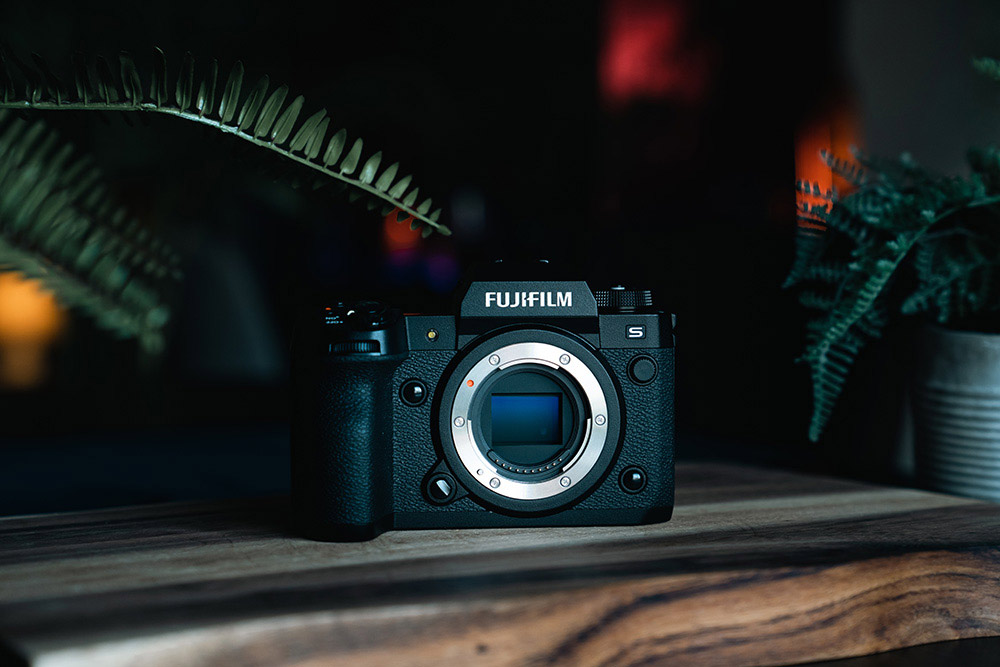
Why do people love Fujifilm so much?
In the last few years, demand for Fujifilm cameras has skyrocketed. Nowadays, you’d struggle to go five minutes in any social media photography circle without hearing about their range. Looking beyond the hype, this is because Fuji’s cameras are simply good cameras - all APS-C models in the X Series come with the cutting-edge X-Trans CMOS sensor, consistently progressing to bring quality performance to all Fuji photographers.
Fujifilm is known for class. Models like the X-T5 and X-H2 bring all the standard features seen in top-end bodies, such as 40MP RAW images and intelligent autofocus algorithms. On the other hand, their more entry-level options offer the perfect balance between usability and power. Their beloved retro designs are made from ultra-durable magnesium and titanium frames, and are renowned for their brilliant ergonomics and ease of use. For both beginners and professionals, their controls are outstanding to use (I mean, who doesn’t love a dial or three?).
Besides prowess in technology and design, Fujifilm stands out with its ideology towards photography. Its ethos, summed up during their release of the X-PRO 3 in 2019, is born out of the modern zeitgeist. According to Fujifilm manager Kunio Aoyama, the influx of digital and smartphone photography has led to the industry of today ‘forgetting the passion of photography,’ putting more emphasis on specs and not the experience that was so beloved about the film era. According to him, what Fujifilm is doing is ‘bringing back the passion to digital cameras’. With characteristic rangefinder designs seen in the X-PRO and X100 lines, and dedicated Film Simulation technology, it’s clear that Fujifilm has used its X Series to carry forward the wonderful user experience from its legacy of film, and is doing exactly this. Its cameras go beyond just photographic tools – they express personality, style, and fun whilst wielding a professional edge.
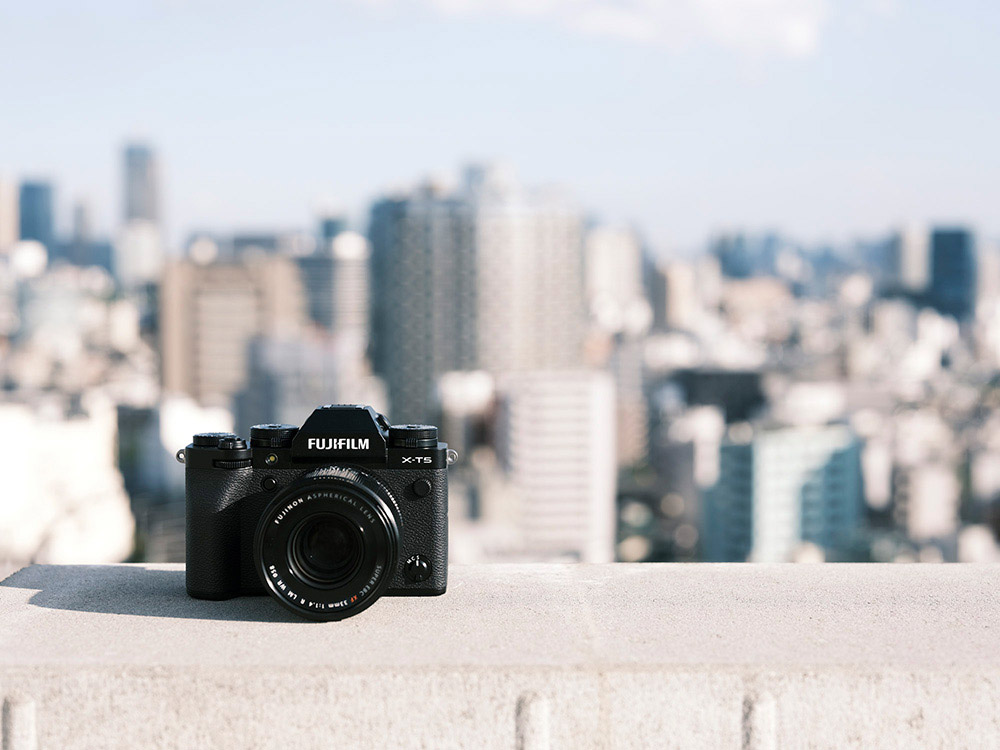
What is the best Fujifilm camera for beginners?
Fujifilm is renowned for how easy its cameras are to use. Their dials and other external controls mean learning manual photography on a Fujifilm digital camera is a tactile and smooth experience. Additionally, each X-Series has a menu that’s easy to navigate and a high-resolution LCD for maximum control.
Arguably the best place to start in the Fujifilm X Series mirrorless lineup is the Fujifilm X-S10. This is the smallest APS-C option it has to offer, which handles brilliantly for beginners. The design of the camera is a lot less daunting than other Fuji designs, which casts aside the abundance of manual controls for a simpler interface that’s much easier to digest. Not only this, but the build quality is remarkable, making you feel confident in your gear – something that goes a long way as a beginner.
Don’t think it skimps on professional features, though. This camera places a 26.1MP sensor, 4K footage and 5-axis image stabilisation into the hands of an entry-level user, which goes to show how the Fujifilm X Series has something to offer for any level of photographer.
One thing beginners look for is great stills straight out of the camera. While others may be well-versed in the art of post-production, beginners initially just want an image that looks great without having to do too much to it. This is where Fuji’s Film Simulation comes in, offering users a variety of instant presets, enabling photographers to begin shaping their creative vision right from the start. The X-S10 specifically comes with intelligent Film Simulation that selects between Provia, Velvia, and Astia presets depending on the scene.
This body comes in a kit with Fujifilm’s most compact X-mount lens, the Fujifilm XC 15-45mm F/3.5-5.6, which despite its compact size includes image stabilisation and outstanding colour reproduction. As Fuji rolls out more models in this range such as the X-S20 (the latest generation of the X-S line), this camera is more commonly found used among others in its range. This is attractive to beginners, as it helps them get a great introductory price on quality gear.
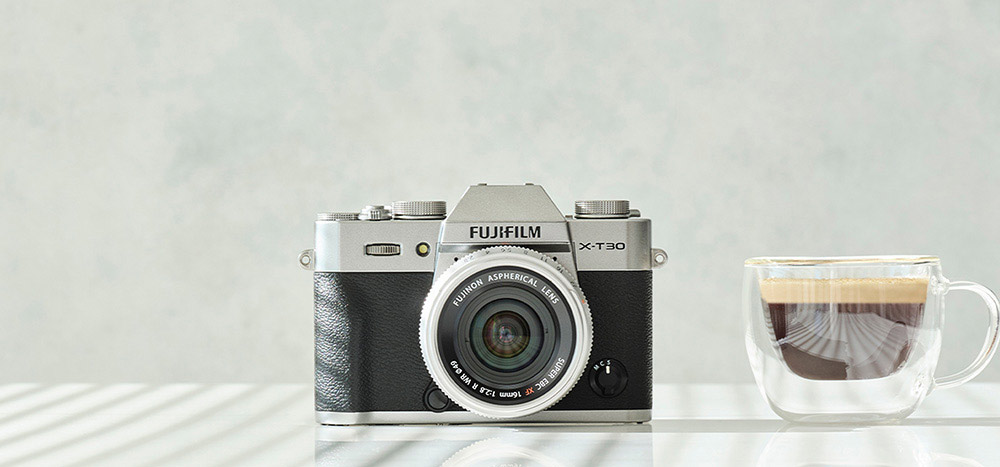
Best Fujifilm Camera for Street Photography
Street photographers are one of Fujifilm’s key demographics, and in the last few years, the use of their cameras and lenses for all kinds of urban shots has skyrocketed due to their size, performance, and style. Regarding their compact cameras, the Fujifilm X100 series is unbelievably popular among young street photographers, as they’re easy to travel with and feel brilliant to use. Cameras like the Fujifilm X100V have seen a boom in demand as influencers have scooped them up in their masses, being favourable to those who don’t want to invest in an interchangeable-lens system. However, the unfortunate side effect of this is that they’re becoming increasingly challenging to find new, so many turn to other APS-C options for Fujifilm X100V alternatives, which are more than enough for street photography and more.
Arguably the best place to get started with street photography is with the Fujifilm X-T30 II. This camera retains the design of each legendary X-T Series body before it – with its compact build, and an iconic silver colourway, it pays homage to the retro aura Fuji is notorious for. The camera comes with fully manual dials that provide a tactile way to dive right into manual photography, and by combining these with Film Simulation modes you can control your creative output with ease. Housed inside this is all the power of the 26.1MP X-Trans CMOS 4 sensor that can capture 4K/30p video with flagship-level performance, combined with the X-Processor 4 that produces the colours for which Fujifilm is so recognisable. Even at only 378g, this camera is a real performer for all kinds of street photography; compact, yet powerful.
Reproducing the images that the X100 series creates is easy – you’ll just need to pick up a Fujifilm 23mm F2 lens, the one that’s used on the point-and-shoot. This is perfect for travel; it’s light, weather resistant, and its 35mm equivalent focal length is beloved by street photographers. This lens comes with additional features that make it a much more powerful tool than the one included for compact cameras. Pairing this with an X-T30 II, or a more powerful body like the XT-5, you can perfect your urban photography experience.
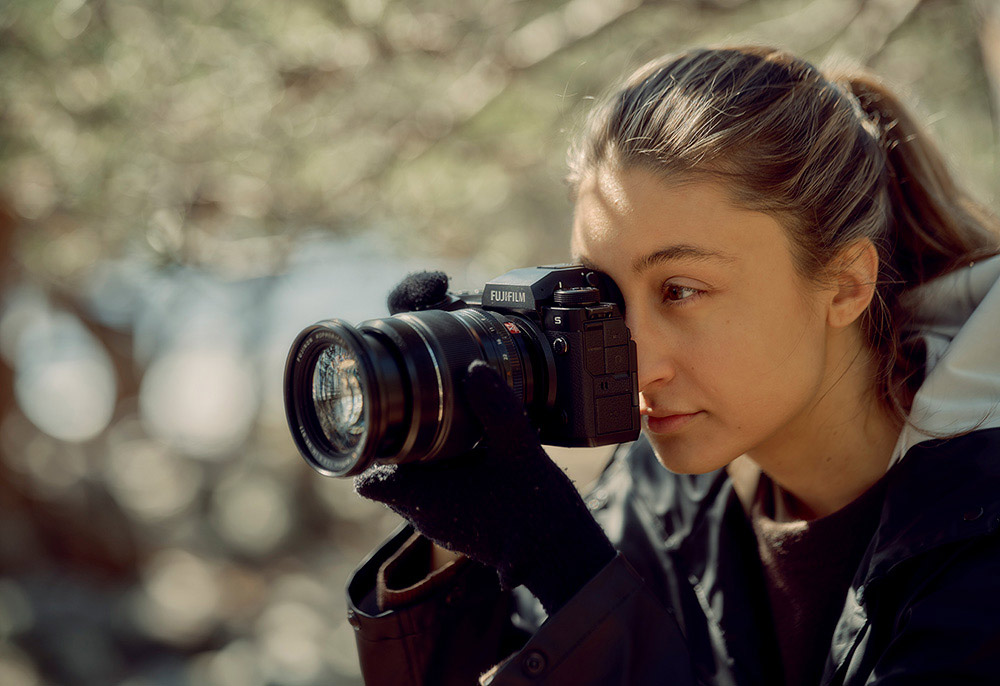
Is Fujifilm good for professional photography?
It’s easy for purists to see the retro design of a Fujifilm X Series camera and assume that they’re just for style. This is far from the case – while their unique designs are super popular among enthusiasts, Fujifilm is still a world leader in imaging technology, having built its name upon decades of strong professional reputation.
The Fujifilm X-T5 honours this legacy – it’s a one-size-fits-all APS-C camera that has something to offer to photographers and videographers alike, although it shines in what it offers stills photographers. It has the joint highest megapixel count in the X Series, with an upgraded phase-detection autofocus algorithm that makes Fujifilm a competitor with the snappy systems of Canon and Sony.
For shooting handheld, the system provides seven stops of in-body image stabilisation, a handy feature you’ll notice quickly with virtually any style of photography. Pixel Shift Multi-Shot is another feature that stills photographers will love; a feature already included in Fuji’s stellar range of medium format cameras. By combining 20 frames of 40MP photo, with the sensor shifted by 0.5 pixels each time, the camera’s X-Processor 5 quickly combines all the frames into a single 160MP image.

Two lens kits are offered for this camera. The 16-80mm F/4 Lens Kit covers all the standard focal lengths that most beginners look for, especially when factoring in the 1.5x crop factor of the APS-C body. For greater control over depth of field, you can look to the 18-55mm F/2.8-4 kit that gives users greater control over their aperture when working at wider focal lengths.
For those looking for the perfect hybrid, the Fujifilm X-H2S is a better bet. Not only does this camera record 4K at 120P and 6.2K, but it has a mechanical shutter speed that allows for continuous shooting up to 15fps, and a blistering 40fps when using the electronic shutter. The autofocus subject detection is powered by AI, and is equally fast, making this perfect for photographers that shoot both video, and styles of photography where the moment counts, like wildlife and sports.
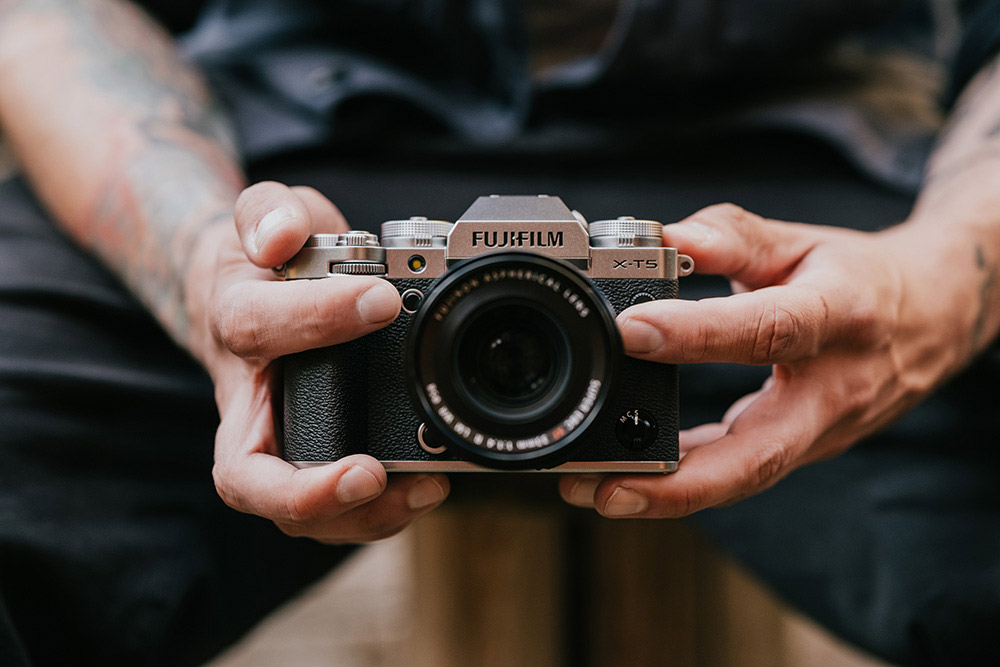
Best Fujifilm Camera for Video
As content creation opportunities continue to grow with the rise of video content, now more than ever before those looking for a digital camera will be looking for something with powerful filmmaking capabilities. As great independent productions become more commonplace, hybrid capabilities are one of the things that make a camera stand out to any burgeoning creator in the current era. Fujifilm knows this, and has thrown its hat in the ring with its astonishing X-H2.
The Fujifilm X-H2 is a powerhouse. While its compact design and cropped sensor may be unassuming to those accustomed to full-frame video cameras, the performance that it brings to the table is enough to rival any hybrid camera on the market. With a strong 40MP imaging sensor, this camera can capture 8K/30p video in 10-bit Apple ProRes without relying on an external recorder, something that gives filmmakers peak control over their videos when editing in post, and outstanding colour accuracy.
Using the F-Log2 colour profile, an X-H2 shooter can unlock 13+ stops of dynamic range that can perfect post-production flexibility. To increase the versatility of this camera even further, shooting in 4K enables a built-in 2x digital zoom, which provides intelligent operation to filmmakers. Fujifilm understands that this camera will be used for the most intensive of filmmaking demands – it offers a clip-on cooling fan designed for the camera that can extend recording times to 4 hours continuously.
When using a Fujifilm camera for video, almost all filmmakers will benefit from using the Fujifilm TG-BT1 Tripod Grip. This brings vlogging capabilities to users of cameras like the X-H2 – when using it as a grip, selfie angles and low-angle shots become trivial, and when deploying it as a tripod, the possibilities for your shot become endless. It connects via Bluetooth to your camera, which enables remote shooting, and even offers zoom operation with lenses equipped with Power Zoom.
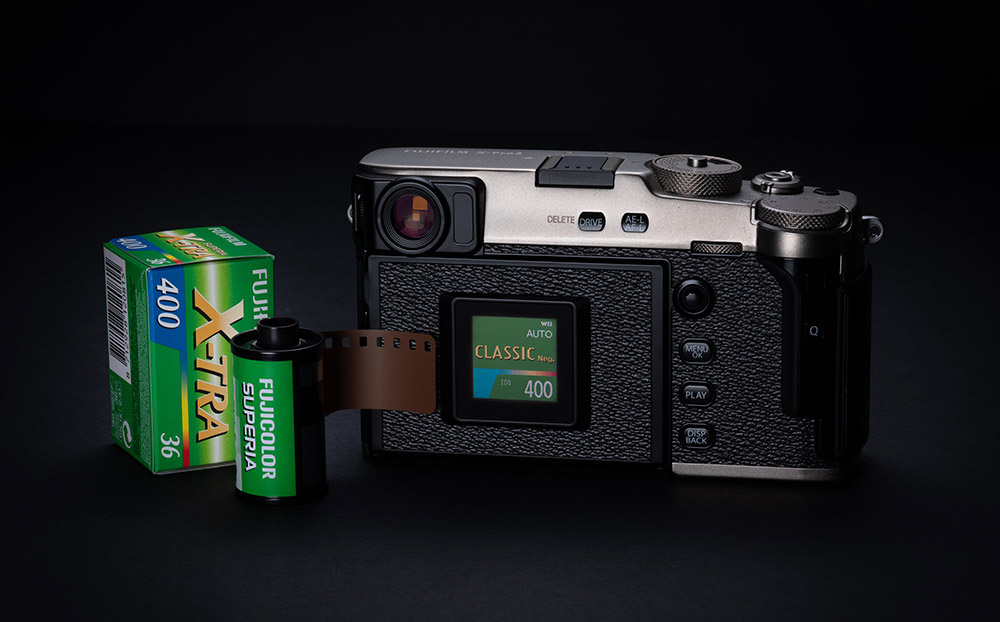
Used Fujifilm Cameras
With Fujifilm cameras in such high demand, and with the company constantly rolling out new products, one of the easiest ways to find the most popular models is to shop for used Fujifilm cameras.
Fujifilm’s X-T cameras are its flagships, and provide the best of what the X Series has to offer. Today, you can buy the hugely popular X-T3 and X-T4 used; two Fuji mirrorless cameras that both made waves when they were released, and still compete with the best today.
Among urban photographers, the Fujifilm X100 series is iconic – however, the first four generations of this camera have been discontinued. Despite this, there’s an abundance of X100 cameras available used –the X100, X100S, X100T, and X100F are all readily available second-hand, which may be perfect for anyone looking to purchase a dependable compact model that carries a retro flair. The latest generation, the Fujifilm X100F, has a sophisticated 24.3MP CMOS sensor and a 91-point autofocus system, making it a reliable compact camera that holds its own today.
If you’re looking to get even more into the rangefinder style, it could be worth purchasing a Fujifilm X-PRO 3. This model is cleverly designed to replicate the feeling of shooting on film, with a hidden LCD, a robust design, and an optical viewfinder, inspiring a feeling that Fujifilm describes as a ‘primal sense of photographic pleasure’. It’s definitely worth checking out if this is true for you too, by picking up a used Fujifilm X-PRO3 while stocks last.
As an Authorised Fujifilm Dealer, Park Cameras is committed to Fuji’s brilliant range of mirrorless cameras. If you’re looking to boost your photo and video with their premium colour science, technology, and optics, there’s no better place to look than our range of new and used Fujifilm cameras.
Share this post:
By Thom Pyle on 07/01/2024

Trade in your old equipment
Fast and easy trade in service ensures your old gear is collected efficiently and you are paid quickly! It's very simple to trade in your unwanted photography gear. Just head over to our dedicated Sell or Part Exchange page, fill out the details, and we'll get back to you with an offer for your old gear. Take the cash, or put it towards the cost of your new gear. It's up to you! Find out more
sign up to the newsletter
Keep up to date on the latest photography news, events and offers. Sign up now
